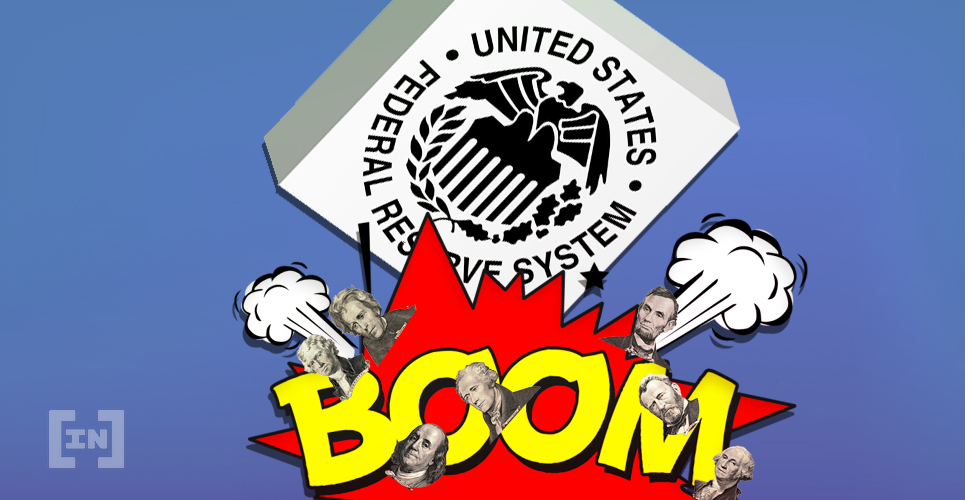Central banks around the world may be in trouble as global economies struggle under increasing pressure from an inactive workforce. Fractional reserves for banks have been set to zero — so what does this mean?
March 2020 will go down in history as the month that another economic and financial crisis was triggered by the COVID-19 outbreak. Central banks are taking unprecedented measures to keep economies afloat, but the wider implications of their actions are far more disturbing.
Fractional Reserves Set to Zero
Fractional reserve is a banking system in which only a fraction of bank deposits are backed by physical cash on hand and is available for withdrawal. This means that, if too many people withdraw at the same time, the bank will be in big trouble. Theoretically, this practice is encouraged by banks and states to expand the economy by freeing capital for lending and more credit. Usually, most banks are required to keep 10 percent of deposits as a reserve, though that has all just changed. Last month, the United States Federal Reserve lowered the fractional reserve requirement to zero percent. This means that there is now nothing, in theory, backing up any bank balance sheet and the entire amount deposited can now be loaned out elsewhere. This adds to the epic levels of debt that the country is already drowning in.It appears that banks could be anticipating a major run on them if the coronavirus situation worsens and people panic. More concerning is that banks have the power to prohibit withdrawals, should a scenario such as this materialize. One of the most recent examples of this was in Greece in 2015 — when account holders were limited to a few euros a day, regardless of how much they held in the bank. Without a fractional reserve, U.S. banks can, in theory, now create and hoard cash with no limits and lend it out wherever they want with zero accountability.On March 15th, the Fed lowered the fractional reserve requirement to 0%.
— Mati Greenspan (tweets ≠ financial advice) (@MatiGreenspan) April 13, 2020
Yet, since that day banks have been hoarding cash like never before. pic.twitter.com/jpYF4Ypzjq

Satoshi’s Vision
The enigmatic Satoshi Nakamoto had a big problem with fractional reserve banking. So much so that it catalyzed his work on a decentralized peer-to-peer digital currency that we know as Bitcoin. On a P2P forum in 2009, he famously wrote;Banks must be trusted to hold our money and transfer it electronically, but they lend it out in waves of credit bubbles with barely a fraction in reserve.These comments came following the 2008 financial crisis, which was largely caused by U.S. banks lending money to low-creditworthy people that could never realistically repay it. It appears that the banks are repeating the same mistake again, all in the name of rescuing an economy that already appears to be doomed.
Disclaimer
In adherence to the Trust Project guidelines, BeInCrypto is committed to unbiased, transparent reporting. This news article aims to provide accurate, timely information. However, readers are advised to verify facts independently and consult with a professional before making any decisions based on this content. Please note that our Terms and Conditions, Privacy Policy, and Disclaimers have been updated.

Martin Young
Martin Young is a seasoned cryptocurrency journalist and editor with over 7 years of experience covering the latest news and trends in the digital asset space. He is passionate about making complex blockchain, fintech, and macroeconomics concepts understandable for mainstream audiences.
Martin has been featured in top finance, technology, and crypto publications including BeInCrypto, CoinTelegraph, NewsBTC, FX Empire, and Asia Times. His articles provide an in-depth analysis of...
Martin Young is a seasoned cryptocurrency journalist and editor with over 7 years of experience covering the latest news and trends in the digital asset space. He is passionate about making complex blockchain, fintech, and macroeconomics concepts understandable for mainstream audiences.
Martin has been featured in top finance, technology, and crypto publications including BeInCrypto, CoinTelegraph, NewsBTC, FX Empire, and Asia Times. His articles provide an in-depth analysis of...
READ FULL BIO
Sponsored
Sponsored
